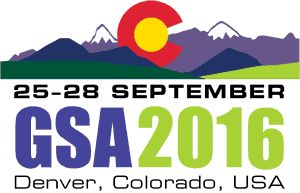Del Vecchio et al., 2016
Surface and Subsurface Characteristics of Periglacial Landscape Modification in Central Pennsylvania
Del Vecchio, J., Martin, C., Mount, G.J., Hayes, J., Comas, X., and DiBiase, R. (2016)
2016 Geological Society of America Fall Meeting, Denver, CO, 25-28 September
-
Shale Hills, GRAD STUDENT
-
Shale Hills, INVESTIGATOR, COLLABORATOR
-
Shale Hills, Sierra, INVESTIGATOR, COLLABORATOR
-
Luquillo, Shale Hills, INVESTIGATOR, COLLABORATOR
-
Shale Hills, INVESTIGATOR
Abstract
In slowly-eroding landscapes, critical zone architecture reflects the integrated effect of multiple Quaternary climate cycles. In the central Appalachians, south of the Last Glacial Maximum ice extent, hillslopes and headwater valleys show extensive evidence of relict periglacial erosion and sediment transport. The limited landscape modification since glaciation suggests that periglacial processes are highly efficient compared to modern, temperate processes. However, the nature and extent of inherited climatic signatures of Pleistocene conditions remains poorly constrained. Here, we use a combination of lidar topographic analysis, field mapping and sampling of colluvium, shallow geophysical surveys, and drilling to characterize regolith heterogeneity at the surface and in the shallow subsurface at Garner Run, a sandstone subcatchment of Shavers Creek in the Susquehanna Shale Hills Critical Zone Observatory, Pennsylvania. Like many sandstone landscapes in central Pennsylvania, Garner Run exhibits a patchwork of relict Pleistocene periglacial features, including solifluction lobes, block fields, and more than 9 meters of colluvial valley fill. Structural analysis and the spatial extent of solifluction lobes indicate greater sediment flux from south-facing hillslopes, in general agreement with regional observations. Additionally, shallow seismic surveys and ground penetrating radar reveal shallower depths to unweathered bedrock on southeast versus northwest-facing hillslopes. Our results suggest an aspect dependence of periglacial hillslope processes that create heterogeneity in the modern surface and subsurface critical zone architecture. Furthermore, our results highlight the potential for headwater valleys in the central Appalachians preserve a record of glacial/interglacial cycles over the Quaternary, and thus contain a sedimentary record of landscape response to climate change.
Citation
Del Vecchio, J., Martin, C., Mount, G.J., Hayes, J., Comas, X., and DiBiase, R. (2016): Surface and Subsurface Characteristics of Periglacial Landscape Modification in Central Pennsylvania . 2016 Geological Society of America Fall Meeting, Denver, CO, 25-28 September.
 This Paper/Book acknowledges NSF CZO grant support.
This Paper/Book acknowledges NSF CZO grant support.
Explore Further






